Extracellular cancer‑associated fibroblasts: A novel subgroup in the cervical cancer microenvironment that exhibits tumor‑promoting roles and prognosis biomarker functions
- Authors:
- Yuehan Wang
- Mingxia Xu
- Yeli Yao
- Ying Li
- Songfa Zhang
- Yunfeng Fu
- Xinyu Wang
-
Affiliations: Women's Reproductive Health Laboratory of Zhejiang Province, Women's Hospital, School of Medicine, Zhejiang University, Hangzhou, Zhejiang 310006, P.R. China, Department of Gynecologic Oncology, Women's Hospital, School of Medicine, Zhejiang University, Hangzhou, Zhejiang 310006, P.R. China - Published online on: February 22, 2024 https://doi.org/10.3892/ol.2024.14300
- Article Number: 167
-
Copyright: © Wang et al. This is an open access article distributed under the terms of Creative Commons Attribution License.
This article is mentioned in:
Abstract
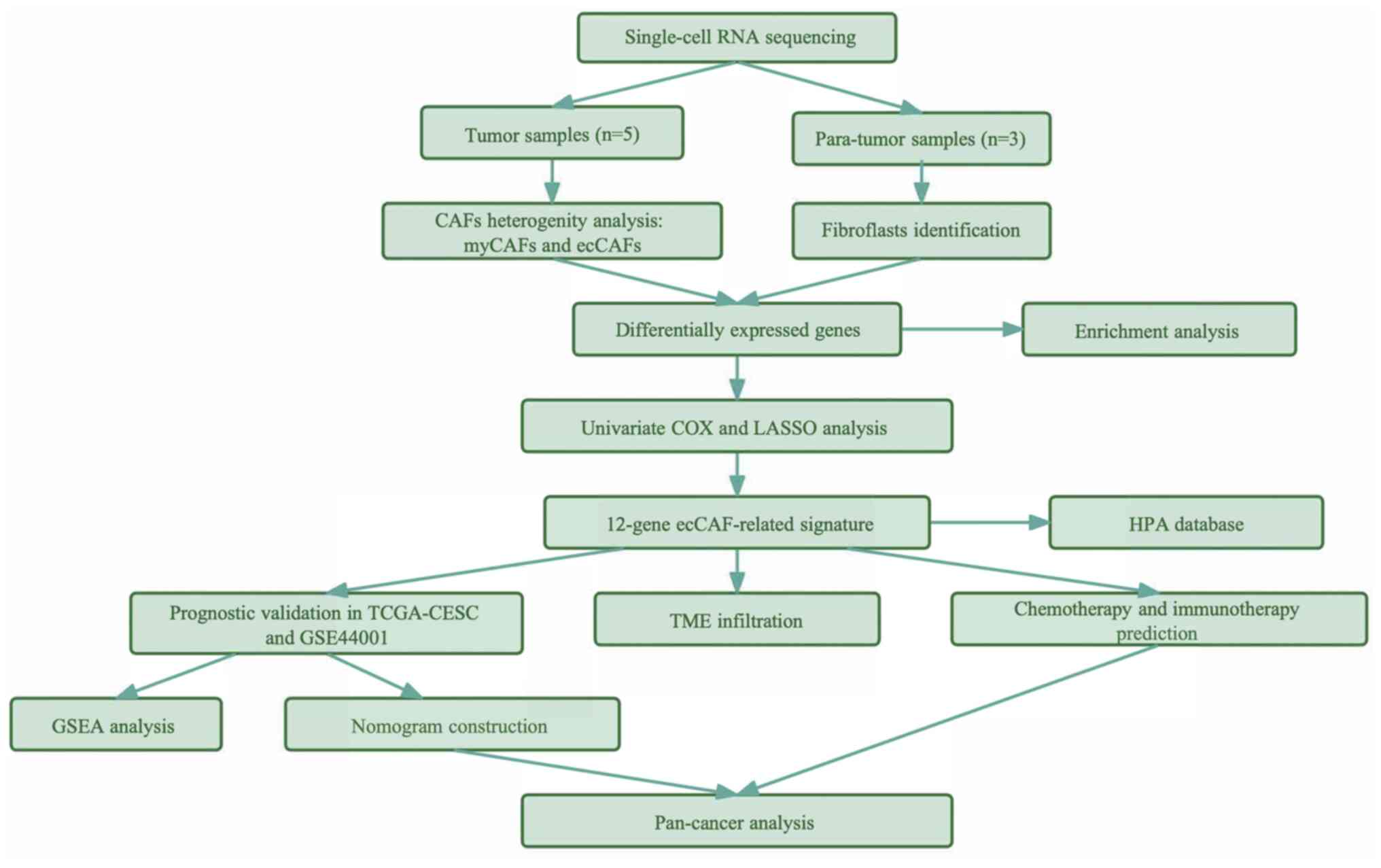 |
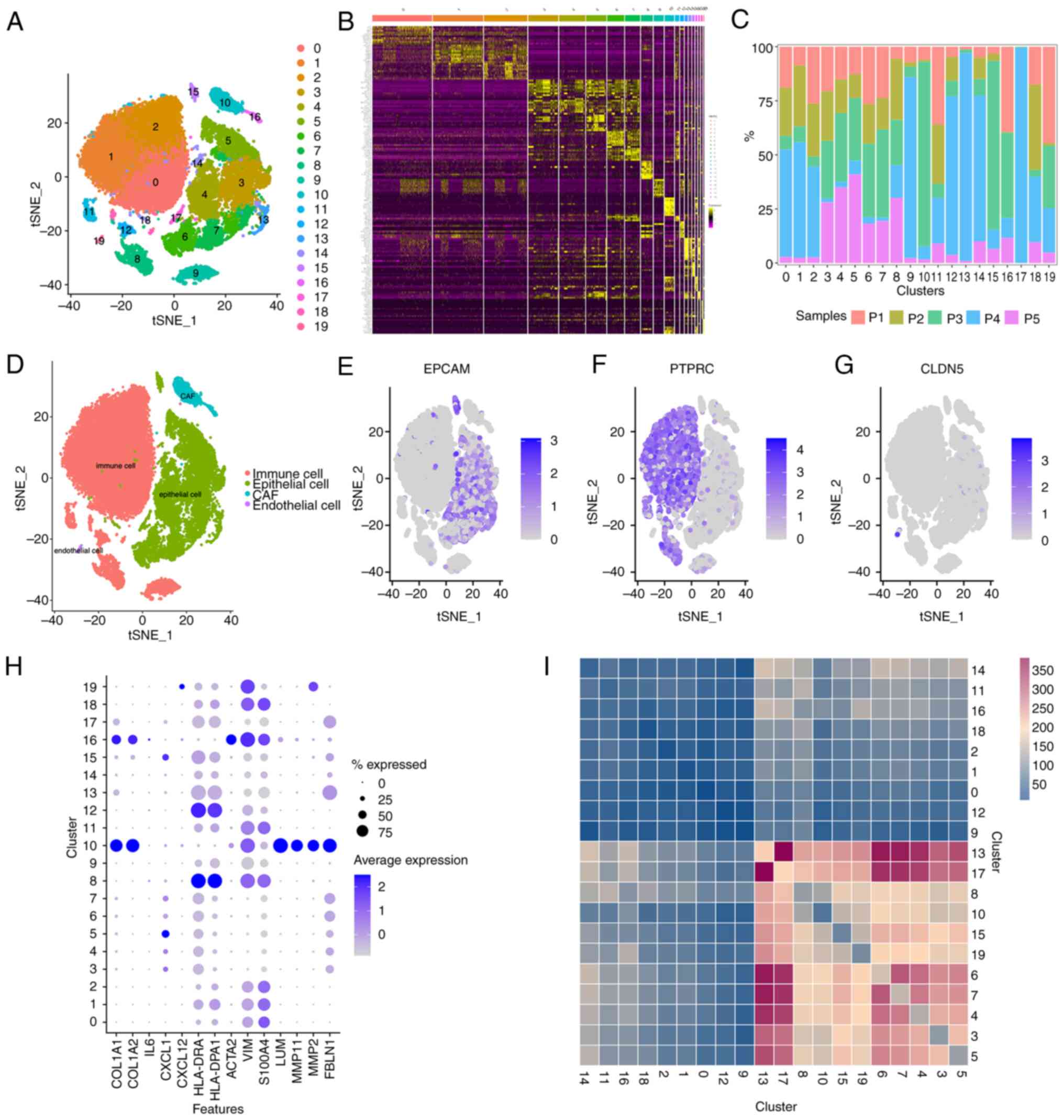 |
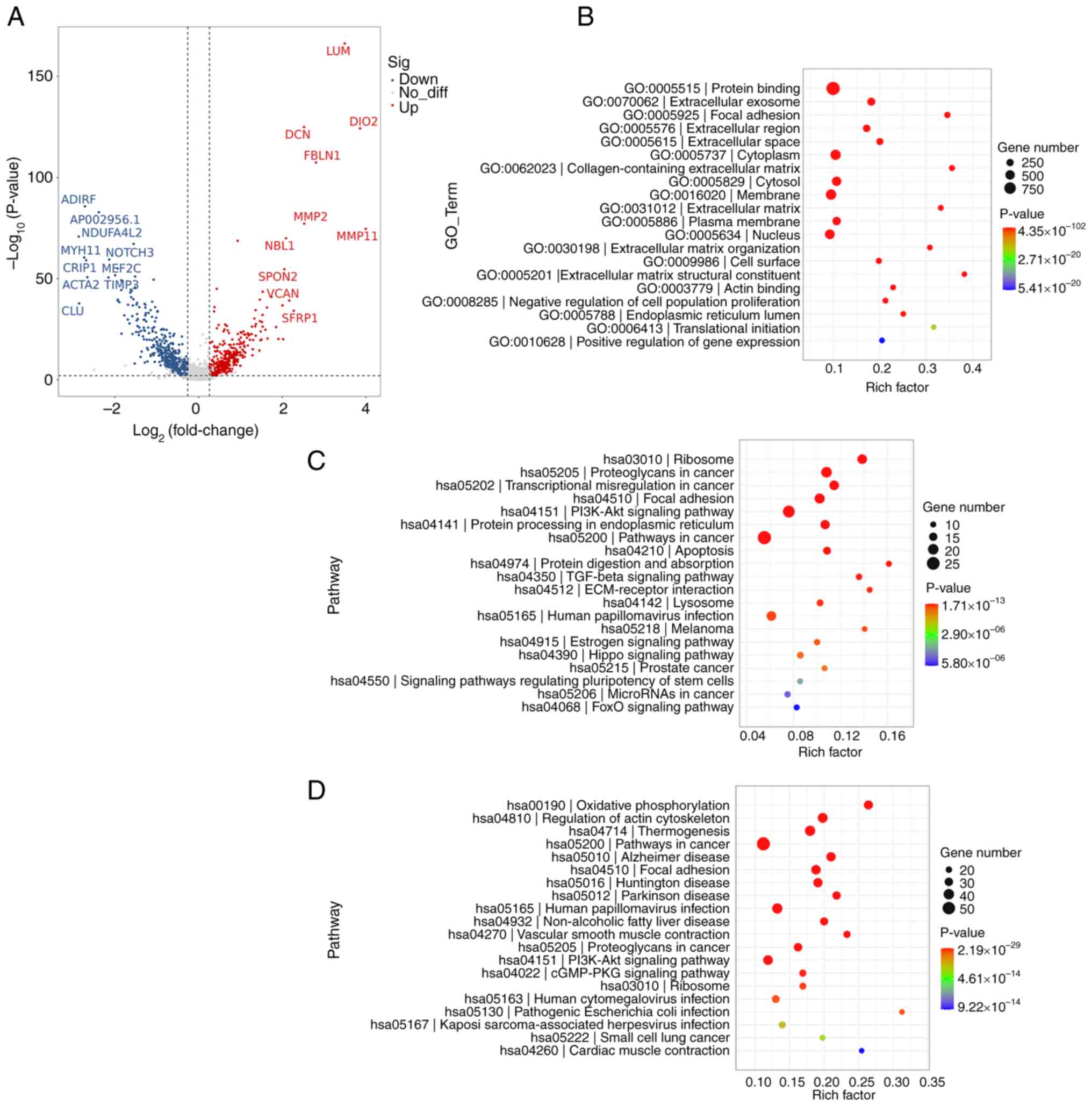 |
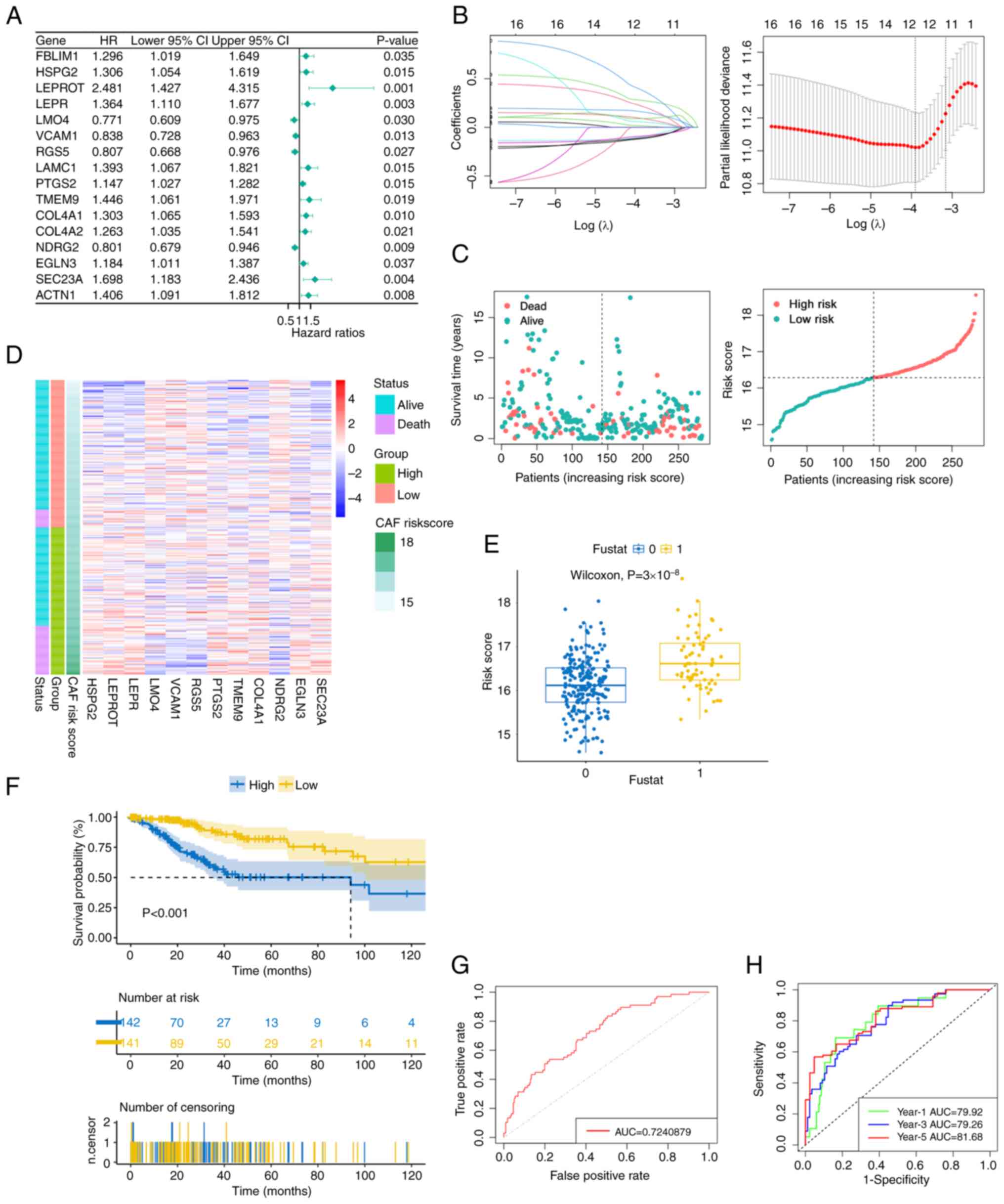 |
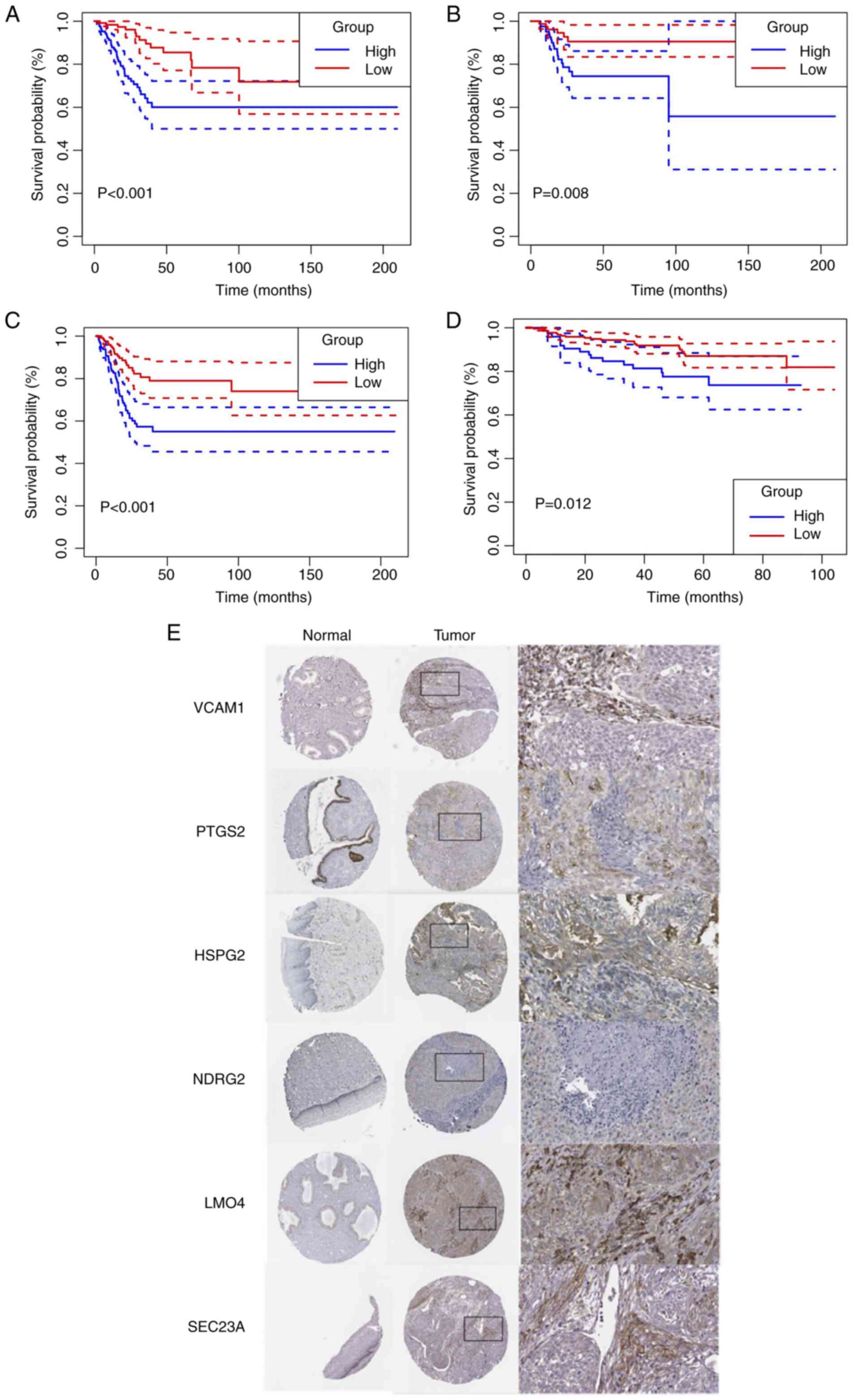 |
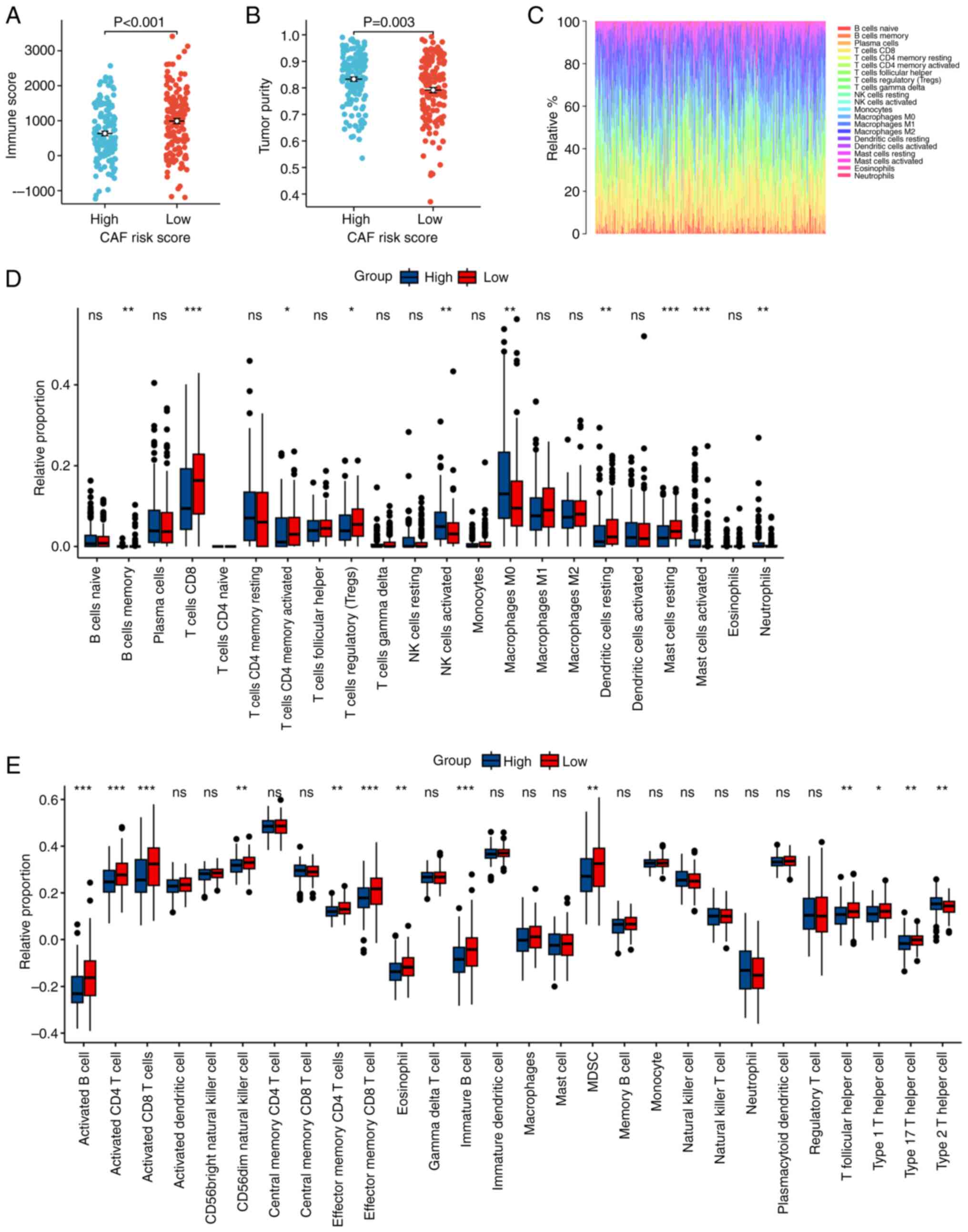 |
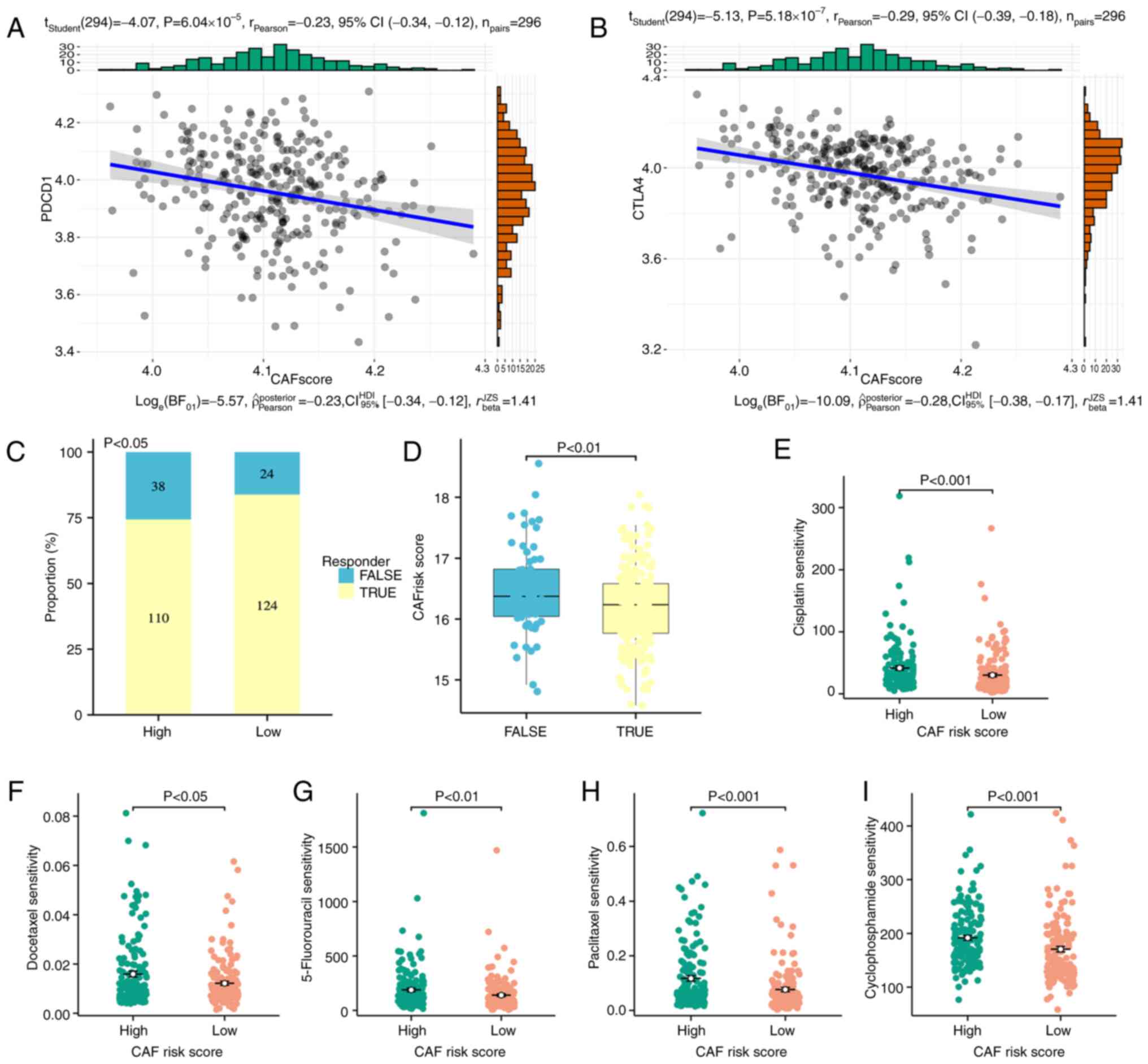 |
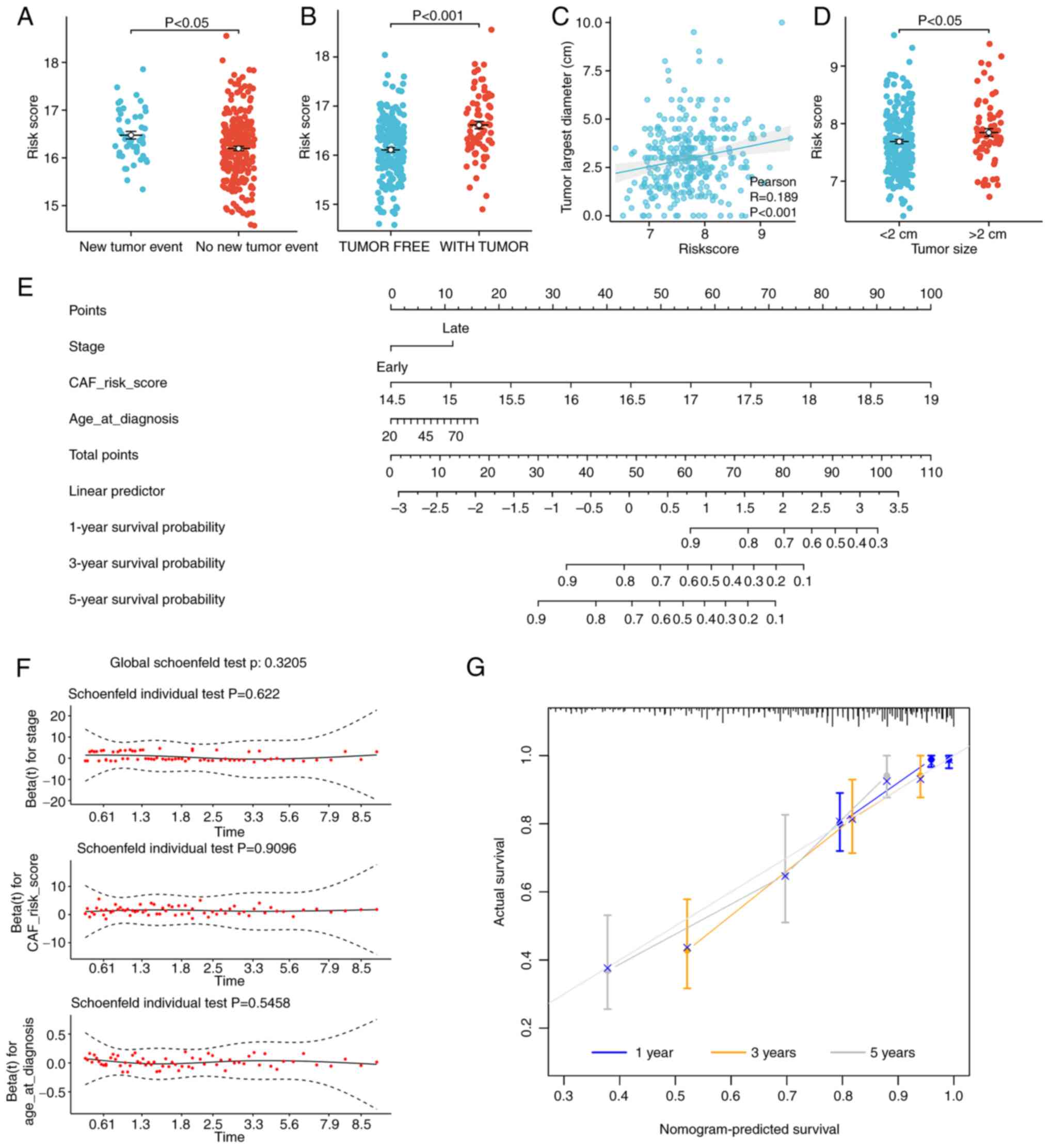 |
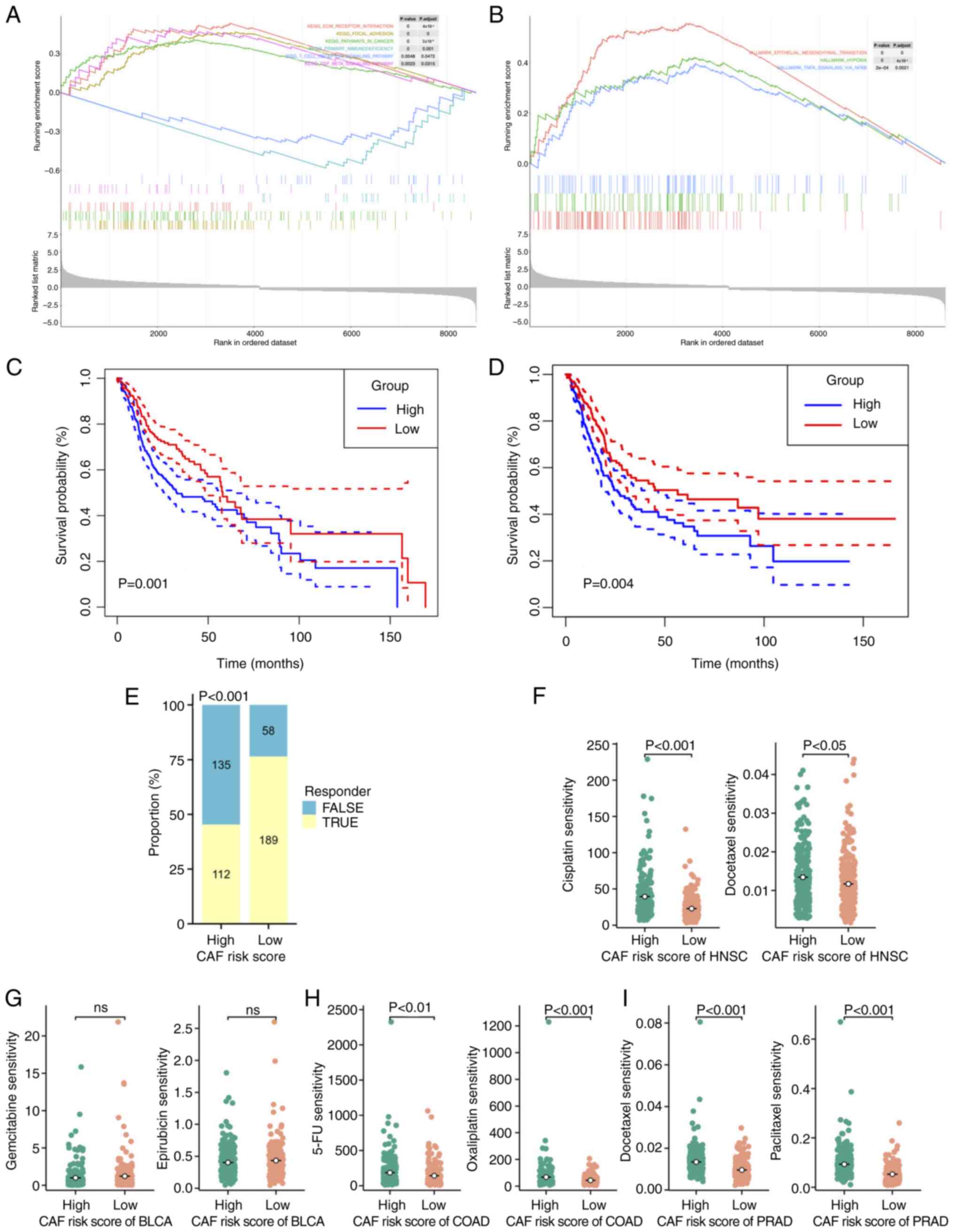 |
|
Sung H, Ferlay J, Siegel RL, Laversanne M, Soerjomataram I, Jemal A and Bray F: Global cancer statistics 2020: GLOBOCAN estimates of incidence and mortality worldwide for 36 cancers in 185 countries. CA Cancer J Clin. 71:209–249. 2021. View Article : Google Scholar : PubMed/NCBI | |
|
Cancer Genome Atlas Research Network: Albert Einstein College of Medicine; Analytical Biological Services; Barretos Cancer Hospital; Baylor College of Medicine; Beckman Research Institute of City of Hope; Buck Institute for Research on Aging; Canada's Michael Smith Genome Sciences Centre; Harvard Medical School, . Helen F, et al: Integrated genomic and molecular characterization of cervical cancer. Nature. 543:378–384. 2017. View Article : Google Scholar : PubMed/NCBI | |
|
Tewari KS and Monk BJ: Gynecologic oncology group trials of chemotherapy for metastatic and recurrent cervical cancer. Curr Oncol Rep. 7:419–434. 2005. View Article : Google Scholar : PubMed/NCBI | |
|
Liontos M, Kyriazoglou A, Dimitriadis I, Dimopoulos MA and Bamias A: Systemic therapy in cervical cancer: 30 Years in review. Crit Rev Oncol Hematol. 137:9–17. 2019. View Article : Google Scholar : PubMed/NCBI | |
|
Mutlu L, Tymon-Rosario J, Harold J and Menderes G: Targeted treatment options for the management of metastatic/persistent and recurrent cervical cancer. Expert Rev Anticancer Ther. 22:633–645. 2022. View Article : Google Scholar : PubMed/NCBI | |
|
Li C, Teixeira AF, Zhu HJ and ten Dijke P: Cancer associated-fibroblast-derived exosomes in cancer progression. Mol Cancer. 20:1542021. View Article : Google Scholar : PubMed/NCBI | |
|
Liu L, Liu L, Yao HH, Zhu ZQ, Ning ZL and Huang Q: Stromal myofibroblasts are associated with poor prognosis in solid cancers: A meta-analysis of published studies. PLoS One. 11:e01599472016. View Article : Google Scholar : PubMed/NCBI | |
|
Lavie D, Ben Shmuel A, Erez N and Scherz Shouval R: Cancer-associated fibroblasts in the single-cell era. Nat Cancer. 3:793–807. 2022. View Article : Google Scholar : PubMed/NCBI | |
|
Yuan Y, Cai X, Shen F and Ma F: HPV post-infection microenvironment and cervical cancer. Cancer Lett. 497:243–254. 2021. View Article : Google Scholar : PubMed/NCBI | |
|
Wright JD, Matsuo K, Huang Y, Tergas AI, Hou JY, Khoury-Collado F, St Clair CM, Ananth CV, Neugut AI and Hershman DL: Prognostic performance of the 2018 international federation of gynecology and obstetrics cervical cancer staging guidelines. Obstet Gynecol. 134:49–57. 2019. View Article : Google Scholar : PubMed/NCBI | |
|
Garré JM, Silva HM, Lafaille JJ and Yang G: CX3CR1+ monocytes modulate learning and learning-dependent dendritic spine remodeling via TNF-α. Nat Med. 23:714–722. 2017. View Article : Google Scholar : PubMed/NCBI | |
|
Chen Y, Chen S, Li K, Zhang Y, Huang X, Li T, Wu S, Wang Y, Carey LB and Qian W: Overdosage of balanced protein complexes reduces proliferation rate in aneuploid cells. Cell Syst. 9:129–142.e5. 2019. View Article : Google Scholar : PubMed/NCBI | |
|
Diskin B, Adam S, Cassini MF, Sanchez G, Liria M, Aykut B, Buttar C, Li E, Sundberg B, Salas RD, et al: PD-L1 engagement on T cells promotes self-tolerance and suppression of neighboring macrophages and effector T cells in cancer. Nat Immunol. 21:442–454. 2020. View Article : Google Scholar : PubMed/NCBI | |
|
Cano Gamez E, Soskic B, Roumeliotis TI, So E, Smyth DJ, Baldrighi M, Willé D, Nakic N, Esparza Gordillo J, Larminie CGC, et al: Single-cell transcriptomics identifies an effectorness gradient shaping the response of CD4+ T cells to cytokines. Nat Commun. 11:18012020. View Article : Google Scholar : PubMed/NCBI | |
|
Xin Z, Lin M, Hao Z, Chen D, Chen Y, Chen X, Xu X, Li J, Wu D, Chai Y and Wu P: The immune landscape of human thymic epithelial tumors. Nat Commun. 13:54632022. View Article : Google Scholar : PubMed/NCBI | |
|
Yang C, Siebert JR, Burns R, Gerbec ZJ, Bonacci B, Rymaszewski A, Rau M, Riese MJ, Rao S, Carlson KS, et al: Heterogeneity of human bone marrow and blood natural killer cells defined by single-cell transcriptome. Nat Commun. 10:39312019. View Article : Google Scholar : PubMed/NCBI | |
|
Deng Y, Zheng Y, Li D, Hong Q, Zhang M, Li Q, Fu B, Wu L, Wang X, Shen W, et al: Expression characteristics of interferon-stimulated genes and possible regulatory mechanisms in lupus patients using transcriptomics analyses. EBioMedicine. 70:1034772021. View Article : Google Scholar : PubMed/NCBI | |
|
Chen Z, Zhou L, Liu L, Hou Y, Xiong M, Yang Y, Hu J and Chen K: Single-cell RNA sequencing highlights the role of inflammatory cancer-associated fibroblasts in bladder urothelial carcinoma. Nat Commun. 11:50772020. View Article : Google Scholar : PubMed/NCBI | |
|
He D, Wang D, Lu P, Yang N, Xue Z, Zhu X, Zhang P and Fan G: Single-cell RNA sequencing reveals heterogeneous tumor and immune cell populations in early-stage lung adenocarcinomas harboring EGFR mutations. Oncogene. 40:355–368. 2021. View Article : Google Scholar : PubMed/NCBI | |
|
Wagner J, Rapsomaniki MA, Chevrier S, Anzeneder T, Langwieder C, Dykgers A, Rees M, Ramaswamy A, Muenst S, Soysal SD, et al: A single-cell atlas of the tumor and immune ecosystem of human breast cancer. Cell. 177:1330–1345.e18. 2019. View Article : Google Scholar : PubMed/NCBI | |
|
Zheng H, Liu H, Ge Y and Wang X: Integrated single-cell and bulk RNA sequencing analysis identifies a cancer associated fibroblast-related signature for predicting prognosis and therapeutic responses in colorectal cancer. Cancer Cell Int. 21:5522021. View Article : Google Scholar : PubMed/NCBI | |
|
Liberzon A, Birger C, Thorvaldsdóttir H, Ghandi M, Mesirov JP and Tamayo P: The molecular signatures database (MSigDB) hallmark gene set collection. Cell Syst. 1:417–425. 2015. View Article : Google Scholar : PubMed/NCBI | |
|
Sergushichev AA: An algorithm for fast preranked gene set enrichment analysis using cumulative statistic calculation. bioRxiv. 0600122016. | |
|
Wang Z, Li Z, Zhou K, Wang C, Jiang L, Zhang L, Yang Y, Luo W, Qiao W, Wang G, et al: Deciphering cell lineage specification of human lung adenocarcinoma with single-cell RNA sequencing. Nat Commun. 12:65002021. View Article : Google Scholar : PubMed/NCBI | |
|
Goldman MJ, Craft B, Hastie M, Repečka K, McDade F, Kamath A, Banerjee A, Luo Y, Rogers D, Brooks AN, et al: Visualizing and interpreting cancer genomics data via the Xena platform. Nat Biotechnol. 38:675–678. 2020. View Article : Google Scholar : PubMed/NCBI | |
|
Lee YY, Kim TJ, Kim JY, Choi CH, Do IG, Song SY, Sohn I, Jung SH, Bae DS, Lee JW and Kim BG: Genetic profiling to predict recurrence of early cervical cancer. Gynecol Oncol. 131:650–654. 2013. View Article : Google Scholar : PubMed/NCBI | |
|
Simon N, Friedman J, Hastie T and Tibshirani R: Regularization paths for Cox's proportional hazards model via coordinate descent. J Stat Softw. 39:1–13. 2011. View Article : Google Scholar : PubMed/NCBI | |
|
Yan Y, Zhang M and Xu S and Xu S: Identification of an immune gene expression signature for predicting lung squamous cell carcinoma prognosis. Biomed Res Int. 2020:50249422020. View Article : Google Scholar : PubMed/NCBI | |
|
Gong Z, Hong F, Wang H, Zhang X and Chen J: An eight-mRNA signature outperforms the lncRNA-based signature in predicting prognosis of patients with glioblastoma. BMC Med Genet. 21:562020. View Article : Google Scholar : PubMed/NCBI | |
|
Yang X, Wu W, Pan Y, Zhou Q, Xu J and Han S: Immune-related genes in tumor-specific CD4+ and CD8+ T cells in colon cancer. BMC Cancer. 20:5852020. View Article : Google Scholar : PubMed/NCBI | |
|
Hänzelmann S, Castelo R and Guinney J: GSVA: Gene set variation analysis for microarray and RNA-seq data. BMC Bioinformatics. 14:72013. View Article : Google Scholar : PubMed/NCBI | |
|
Wang D, Zhang Y, Wang X, Zhang L and Xu S: Construction and validation of an aging-related gene signature predicting the prognosis of pancreatic cancer. Front Genet. 14:10222652023. View Article : Google Scholar : PubMed/NCBI | |
|
Jiang P, Gu S, Pan D, Fu J, Sahu A, Hu X, Li Z, Traugh N, Bu X, Li B, et al: Signatures of T cell dysfunction and exclusion predict cancer immunotherapy response. Nat Med. 24:1550–1558. 2018. View Article : Google Scholar : PubMed/NCBI | |
|
Arina A, Idel C, Hyjek EM, Alegre ML, Wang Y, Bindokas VP, Weichselbaum RR and Schreiber H: Tumor-associated fibroblasts predominantly come from local and not circulating precursors. Proc Natl Acad Sci USA. 113:7551–7556. 2016. View Article : Google Scholar : PubMed/NCBI | |
|
Yang W, Soares J, Greninger P, Edelman EJ, Lightfoot H, Forbes S, Bindal N, Beare D, Smith JA, Thompson IR, et al: Genomics of drug sensitivity in cancer (GDSC): A resource for therapeutic biomarker discovery in cancer cells. Nucleic Acids Res. 41:(Database Issue). D955–D961. 2013. View Article : Google Scholar : PubMed/NCBI | |
|
Maeser D, Gruener RF and Huang RS: oncoPredict: An R package for predicting in vivo or cancer patient drug response and biomarkers from cell line screening data. Brief Bioinform. 22:bbab2602021. View Article : Google Scholar : PubMed/NCBI | |
|
Li Y, Lu S, Lan M, Peng X, Zhang Z and Lang J: A prognostic nomogram integrating novel biomarkers identified by machine learning for cervical squamous cell carcinoma. J Transl Med. 18:2232020. View Article : Google Scholar : PubMed/NCBI | |
|
Long J, Chen P, Lin J, Bai Y, Yang X, Bian J, Lin Y, Wang D, Yang X, Zheng Y, et al: DNA methylation-driven genes for constructing diagnostic, prognostic, and recurrence models for hepatocellular carcinoma. Theranostics. 9:7251–7267. 2019. View Article : Google Scholar : PubMed/NCBI | |
|
Uhlén M, Fagerberg L, Hallström BM, Lindskog C, Oksvold P, Mardinoglu A, Sivertsson Å, Kampf C, Sjöstedt E, Asplund A, et al: Proteomics. Tissue-based map of the human proteome. Science. 347:12604192015. View Article : Google Scholar : PubMed/NCBI | |
|
Song K, Hao J, Ge Z and Chen P: Clinical and survival impact of sex-determining region Y-Box 2 in colorectal cancer: An integrated analysis of the immunohistochemical study and bioinformatics analysis. J Oncol. 2020:37615352020. View Article : Google Scholar : PubMed/NCBI | |
|
Yoshida GJ: Regulation of heterogeneous cancer-associated fibroblasts: The molecular pathology of activated signaling pathways. J Exp Clin Cancer Res. 39:1122020. View Article : Google Scholar : PubMed/NCBI | |
|
Au Yeung CL, Tsang TY, Yau PL and Kwok TT: Human papillomavirus type 16 E6 induces cervical cancer cell migration through the p53/microRNA-23b/urokinase-type plasminogen activator pathway. Oncogene. 30:2401–2410. 2011. View Article : Google Scholar : PubMed/NCBI | |
|
Sato T, Sakai T, Noguchi Y, Takita M, Hirakawa S and Ito A: Tumor-stromal cell contact promotes invasion of human uterine cervical carcinoma cells by augmenting the expression and activation of stromal matrix metalloproteinases. Gynecol Oncol. 92:47–56. 2004. View Article : Google Scholar : PubMed/NCBI | |
|
Zhang W, Ge Y, Cheng Q, Zhang Q, Fang L and Zheng J: Decorin is a pivotal effector in the extracellular matrix and tumour microenvironment. Oncotarget. 9:5480–5491. 2018. View Article : Google Scholar : PubMed/NCBI | |
|
Schulz WA, Ingenwerth M, Djuidje CE, Hader C, Rahnenführer J and Engers R: Changes in cortical cytoskeletal and extracellular matrix gene expression in prostate cancer are related to oncogenic ERG deregulation. BMC Cancer. 10:5052010. View Article : Google Scholar : PubMed/NCBI | |
|
Lucarelli G, Rutigliano M, Bettocchi C, Palazzo S, Vavallo A, Galleggiante V, Trabucco S, Di Clemente D, Selvaggi FP, Battaglia M and Ditonno P: Spondin-2, a secreted extracellular matrix protein, is a novel diagnostic biomarker for prostate cancer. J Urol. 190:2271–2277. 2013. View Article : Google Scholar : PubMed/NCBI | |
|
Kubala JM, Laursen KB, Schreiner R, Williams RM, van der Mijn JC, Crowley MJ, Mongan NP, Nanus DM, Heller DA and Gudas LJ: NDUFA4L2 reduces mitochondrial respiration resulting in defective lysosomal trafficking in clear cell renal cell carcinoma. Cancer Biol Ther. 24:21706692023. View Article : Google Scholar : PubMed/NCBI | |
|
Chen PH, Shen WL, Shih CM, Ho KH, Cheng CH, Lin CW, Lee CC, Liu AJ and Chen KC: The CHAC1-inhibited Notch3 pathway is involved in temozolomide-induced glioma cytotoxicity. Neuropharmacology. 116:300–314. 2017. View Article : Google Scholar : PubMed/NCBI | |
|
Deaton RA, Bulut G, Serbulea V, Salamon A, Shankman LS, Nguyen AT and Owens GK: A new autosomal Myh11-CreERT2 smooth muscle cell lineage tracing and gene knockout mouse model-brief report. Arterioscler Thromb Vasc Biol. 43:203–211. 2023. View Article : Google Scholar : PubMed/NCBI | |
|
Loumaye A, Lause P, Zhong X, Zimmers TA, Bindels LB and Thissen JP: Activin a causes muscle atrophy through MEF2C-dependent impaired myogenesis. Cells. 11:11192022. View Article : Google Scholar : PubMed/NCBI | |
|
Yoshihara K, Shahmoradgoli M, Martínez E, Vegesna R, Kim H, Torres-Garcia W, Treviño V, Shen H, Laird PW, Levine DA, et al: Inferring tumour purity and stromal and immune cell admixture from expression data. Nat Commun. 4:26122013. View Article : Google Scholar : PubMed/NCBI | |
|
Chiossone L, Dumas PY, Vienne M and Vivier E: Natural killer cells and other innate lymphoid cells in cancer. Nat Rev Immunol. 18:671–688. 2018. View Article : Google Scholar : PubMed/NCBI | |
|
Giles JR, Globig AM, Kaech SM and Wherry EJ: CD8+ T cells in the cancer-immunity cycle. Immunity. 56:2231–2253. 2023. View Article : Google Scholar : PubMed/NCBI | |
|
Speiser DE, Chijioke O, Schaeuble K and Münz C: CD4+ T cells in cancer. Nat Cancer. 4:317–329. 2023. View Article : Google Scholar : PubMed/NCBI | |
|
Wei E, Reisinger A, Li J, French LE, Clanner-Engelshofen B and Reinholz M: Integration of scRNA-Seq and TCGA RNA-Seq to analyze the heterogeneity of HPV+ and HPV-cervical cancer immune cells and establish molecular risk models. Front Oncol. 12:8609002022. View Article : Google Scholar : PubMed/NCBI | |
|
Johnson DE, Burtness B, Leemans CR, Lui VWY, Bauman JE and Grandis JR: Head and neck squamous cell carcinoma. Nat Rev Dis Primers. 6:922020. View Article : Google Scholar : PubMed/NCBI | |
|
Shaker OG, Hammam OA and Wishahi MM: Is there a correlation between HPV and urinary bladder carcinoma? Biomed Pharmacother. 67:183–191. 2013. View Article : Google Scholar : PubMed/NCBI | |
|
Pelizzer T, Dias CP, Poeta J, Torriani T and Roncada C: Colorectal cancer prevalence linked to human papillomavirus: A systematic review with meta-analysis. Rev Bras Epidemiol. 19:791–802. 2016.(In Portuguese, English). View Article : Google Scholar : PubMed/NCBI | |
|
Chen AC, Waterboer T, Keleher A, Morrison B, Jindal S, McMillan D, Nicol D, Gardiner RA, McMillan NA and Antonsson A: Human papillomavirus in benign prostatic hyperplasia and prostatic adenocarcinoma patients. Pathol Oncol Res. 17:613–617. 2011. View Article : Google Scholar : PubMed/NCBI | |
|
Kamat AM, Hahn NM, Efstathiou JA, Lerner SP, Malmström PU, Choi W, Guo CC, Lotan Y and Kassouf W: Bladder cancer. Lancet. 388:2796–2810. 2016. View Article : Google Scholar : PubMed/NCBI | |
|
Gelibter AJ, Caponnetto S, Urbano F, Emiliani A, Scagnoli S, Sirgiovanni G, Napoli VM and Cortesi E: Adjuvant chemotherapy in resected colon cancer: When, how and how long? Surg Oncol. 30:100–107. 2019. View Article : Google Scholar : PubMed/NCBI | |
|
Schatten H: Brief overview of prostate cancer statistics, grading, diagnosis and treatment strategies. Adv Exp Med Biol. 1095:1–14. 2018. View Article : Google Scholar : PubMed/NCBI | |
|
Shanmugaraj B, Malla A, Bulaon CJI, Phoolcharoen W and Phoolcharoen N: Harnessing the potential of plant expression system towards the production of vaccines for the prevention of human papillomavirus and cervical cancer. Vaccines (Basel). 10:20642022. View Article : Google Scholar : PubMed/NCBI | |
|
National Comprehensive Cancer Network and Clinical practice guidelines in oncology cervical cancer, . version 4. 2019. https://www.nccn.org/professionals/physician_gls/pdf/cervical.pdfMarch 29–2019. | |
|
Mauricio D, Zeybek B, Tymon-Rosario J, Harold J and Santin AD: Immunotherapy in cervical cancer. Curr Oncol Rep. 23:612021. View Article : Google Scholar : PubMed/NCBI | |
|
Long HJ III, Bundy BN, Grendys EC Jr, Benda JA, McMeekin DS, Sorosky J, Miller DS, Eaton LA and Fiorica JV; Gynecologic Oncology Group Study, : Randomized phase III trial of cisplatin with or without topotecan in carcinoma of the uterine cervix: A gynecologic oncology group study. J Clin Oncol. 23:4626–4633. 2005. View Article : Google Scholar : PubMed/NCBI | |
|
Monk BJ, Sill MW, McMeekin DS, Cohn DE, Ramondetta LM, Boardman CH, Benda J and Cella D: Phase III trial of four cisplatin-containing doublet combinations in stage IVB, recurrent, or persistent cervical carcinoma: A gynecologic oncology group study. J Clin Oncol. 27:4649–4655. 2009. View Article : Google Scholar : PubMed/NCBI | |
|
Chen Y, McAndrews KM and Kalluri R: Clinical and therapeutic relevance of cancer-associated fibroblasts. Nat Rev Clin Oncol. 18:792–804. 2021. View Article : Google Scholar : PubMed/NCBI | |
|
Szymonowicz KA and Chen J: Biological and clinical aspects of HPV-related cancers. Cancer Biol Med. 17:864–878. 2020. View Article : Google Scholar : PubMed/NCBI | |
|
Spurgeon ME and Lambert PF: Human papillomavirus and the stroma: Bidirectional crosstalk during the virus life cycle and carcinogenesis. Viruses. 9:2192017. View Article : Google Scholar : PubMed/NCBI | |
|
Fullár A, Dudás J, Oláh L, Hollósi P, Papp Z, Sobel G, Karászi K, Paku S, Baghy K and Kovalszky I: Remodeling of extracellular matrix by normal and tumor-associated fibroblasts promotes cervical cancer progression. BMC Cancer. 15:2562015. View Article : Google Scholar : PubMed/NCBI | |
|
Pilch H, Schlenger K, Steiner E, Brockerhoff P, Knapstein P and Vaupel P: Hypoxia-stimulated expression of angiogenic growth factors in cervical cancer cells and cervical cancer-derived fibroblasts. Int J Gynecol Cancer. 11:137–142. 2001. View Article : Google Scholar : PubMed/NCBI | |
|
Woodby B, Scott M and Bodily J: The interaction between human papillomaviruses and the stromal microenvironment. Prog Mol Biol Transl Sci. 144:169–238. 2016. View Article : Google Scholar : PubMed/NCBI | |
|
Murata T, Mizushima H, Chinen I, Moribe H, Yagi S, Hoffman RM, Kimura T, Yoshino K, Ueda Y, Enomoto T and Mekada E: HB-EGF and PDGF mediate reciprocal interactions of carcinoma cells with cancer-associated fibroblasts to support progression of uterine cervical cancers. Cancer Res. 71:6633–6642. 2011. View Article : Google Scholar : PubMed/NCBI | |
|
Chiantore MV, Mangino G, Iuliano M, Zangrillo MS, De Lillis I, Vaccari G, Accardi R, Tommasino M, Columba Cabezas S, Federico M, et al: Human papillomavirus E6 and E7 oncoproteins affect the expression of cancer-related microRNAs: Additional evidence in HPV induced tumorigenesis. J Cancer Res Clin Oncol. 142:1751–1763. 2016. View Article : Google Scholar : PubMed/NCBI | |
|
Evanko SP, Potter-Perigo S, Bollyky PL, Nepom GT and Wight TN: Hyaluronan and versican in the control of human T-lymphocyte adhesion and migration. Matrix Biol. 31:90–100. 2012. View Article : Google Scholar : PubMed/NCBI | |
|
Bougherara H, Mansuet-Lupo A, Alifano M, Ngô C, Damotte D, Le Frère-Belda MA, Donnadieu E and Peranzoni E: Real-time imaging of resident T cells in human lung and ovarian carcinomas reveals how different tumor microenvironments control T lymphocyte migration. Front Immunol. 6:5002015. View Article : Google Scholar : PubMed/NCBI | |
|
Grindel BJ, Martinez JR, Tellman TV, Harrington DA, Zafar H, Nakhleh L, Chung LW and Farach Carson MC: Matrilysin/MMP-7 cleavage of perlecan/HSPG2 complexed with semaphorin 3A supports FAK-mediated stromal invasion by prostate cancer cells. Sci Rep. 8:72622018. View Article : Google Scholar : PubMed/NCBI | |
|
Kazanskaya GM, Tsidulko AY, Volkov AM, Kiselev RS, Suhovskih AV, Kobozev VV, Gaytan AS, Aidagulova SV, Krivoshapkin AL and Grigorieva EV: Heparan sulfate accumulation and perlecan/HSPG2 up-regulation in tumour tissue predict low relapse-free survival for patients with glioblastoma. Histochem Cell Biol. 149:235–244. 2018. View Article : Google Scholar : PubMed/NCBI | |
|
Zhou X, Liang S, Zhan Q, Yang L, Chi J and Wang L: HSPG2 overexpression independently predicts poor survival in patients with acute myeloid leukemia. Cell Death Dis. 11:4922020. View Article : Google Scholar : PubMed/NCBI | |
|
Li L, Meng X, Liu L, Xiang Y, Wang F, Yu L, Zhou F, Zheng C, Zhou W, Cui S, et al: Single-nucleotide polymorphisms in LEP and LEPR associated with breast cancer risk: Results from a multicenter case-control study in Chinese females. Front Oncol. 12:8095702022. View Article : Google Scholar : PubMed/NCBI | |
|
Li B, He Y, Li P and Chen X: Leptin receptor overlapping transcript (LEPROT) is associated with the tumor microenvironment and a prognostic predictor in pan-cancer. Front Genet. 12:7494352021. View Article : Google Scholar : PubMed/NCBI | |
|
Hashemi Goradel N, Najafi M, Salehi E, Farhood B and Mortezaee K: Cyclooxygenase-2 in cancer: A review. J Cell Physiol. 234:5683–5699. 2019. View Article : Google Scholar : PubMed/NCBI | |
|
Jung YS, Stratton SA, Lee SH, Kim MJ, Jun S, Zhang J, Zheng B, Cervantes CL, Cha JH, Barton MC and Park JI: TMEM9-v-ATPase activates Wnt/β-catenin signaling via APC lysosomal degradation for liver regeneration and tumorigenesis. Hepatology. 73:776–794. 2021. View Article : Google Scholar : PubMed/NCBI | |
|
Zhang H, Wang Y and Ding H: COL4A1, negatively regulated by XPD and miR-29a-3p, promotes cell proliferation, migration, invasion and epithelial-mesenchymal transition in liver cancer cells. Clin Transl Oncol. 23:2078–2089. 2021. View Article : Google Scholar : PubMed/NCBI | |
|
Mao K, You C, Lei D and Zhang H: Potential regulation of glioma through the induction of apoptosis signaling via Egl-9 family hypoxia-inducible factor 3. Oncol Lett. 13:893–897. 2017. View Article : Google Scholar : PubMed/NCBI | |
|
Wang Y, Lieberman R, Pan J, Zhang Q, Du M, Zhang P, Nevalainen M, Kohli M, Shenoy NK, Meng H, et al: miR-375 induces docetaxel resistance in prostate cancer by targeting SEC23A and YAP1. Mol Cancer. 15:702016. View Article : Google Scholar : PubMed/NCBI | |
|
Lassalle S, Zangari J, Popa A, Ilie M, Hofman V, Long E, Patey M, Tissier F, Belléannée G, Trouette H, et al: MicroRNA-375/SEC23A as biomarkers of the in vitro efficacy of vandetanib. Oncotarget. 7:30461304782016. View Article : Google Scholar : PubMed/NCBI | |
|
Chen XL, Lei L, Hong LL and Ling ZQ: Potential role of NDRG2 in reprogramming cancer metabolism and epithelial-to-mesenchymal transition. Histol Histopathol. 33:655–663. 2018.PubMed/NCBI | |
|
Silini A, Ghilardi C, Figini S, Sangalli F, Fruscio R, Dahse R, Pedley RB, Giavazzi R and Bani M: Regulator of G-protein signaling 5 (RGS5) protein: A novel marker of cancer vasculature elicited and sustained by the tumor's proangiogenic microenvironment. Cell Mol Life Sci. 69:1167–1178. 2012. View Article : Google Scholar : PubMed/NCBI | |
|
Zhou Z, Zhou Q, Wu X, Xu S, Hu X, Tao X, Li B, Peng J, Li D, Shen L, et al: VCAM-1 secreted from cancer-associated fibroblasts enhances the growth and invasion of lung cancer cells through AKT and MAPK signaling. Cancer Lett. 473:62–73. 2020. View Article : Google Scholar : PubMed/NCBI | |
|
Ding K, Wu Z, Li X, Sheng Y, Wang X and Tan S: LMO4 mediates trastuzumab resistance in HER2 positive breast cancer cells. Am J Cancer Res. 8:594–609. 2018.PubMed/NCBI | |
|
Chen T, Chen X, Zhang S, Zhu J, Tang B, Wang A, Dong L, Zhang Z, Yu C, Sun Y, et al: The genome sequence archive family: toward explosive data growth and diverse data types. Genomics Proteomics Bioinformatics. 19:578–583. 2021. View Article : Google Scholar : PubMed/NCBI | |
|
CNCB-NGDC Members, . Partners Database resources of the national genomics data center, China national center for bioinformation in 2022. Nucleic Acids Res. 50(D1): D27–D38. 2022. View Article : Google Scholar : PubMed/NCBI |









